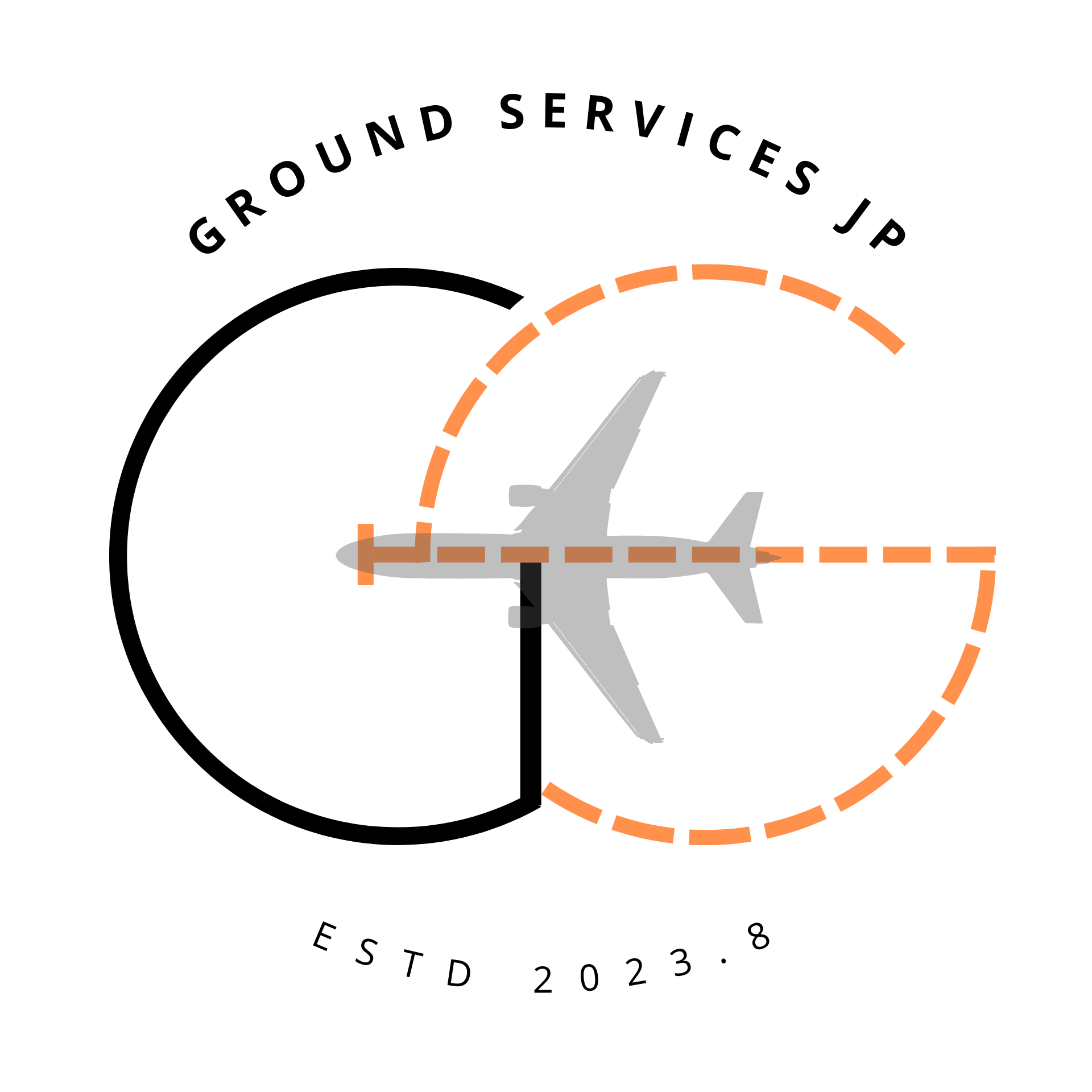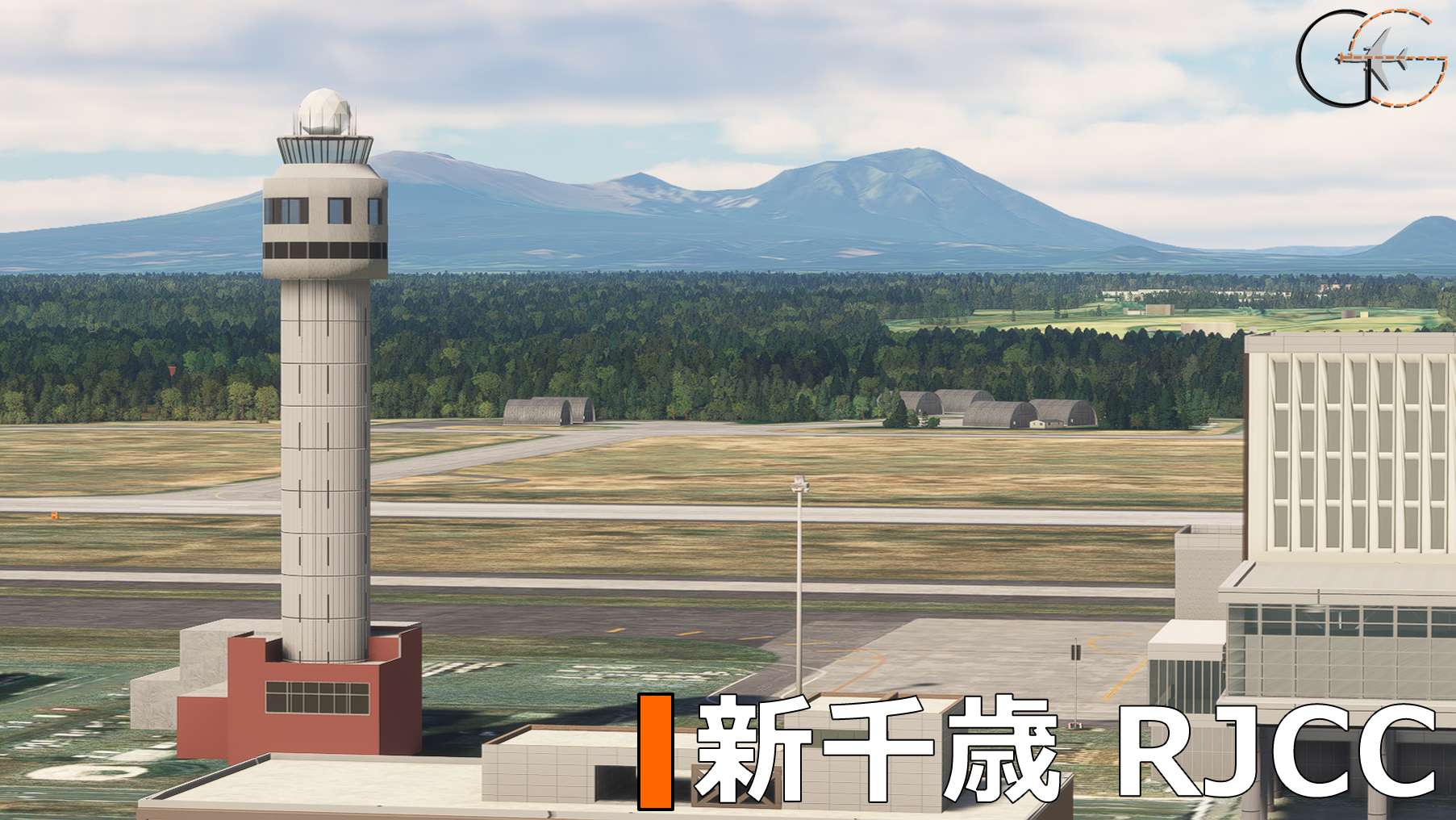この記事には、一部筆者の独自研究及び推測が含まれます。
This article contains some of the author’s own research and speculations.
運用規定 Important Local Traffic Regulations
補助動力装置の使用制限 Restrictions about the use of auxiliary power units (APU)
航空機が固定動力設備付きのスポットを使用する場合は、管理者が特に必要と認める場合を除き、 次に掲げる時間を越えて補助動力装置を使用してはならない。
(1) 出発予定時刻前の30分間
(2) 到着後、固定動力設備が使用可能と なるまでに必要とする最小限度の時間
(3) 航空機が点検整備のため補助動力装置を必要とする場合は、それに要する最小限度の時間
備考 :
スポット2, 3, 5-12, 14-19及び69-71は、固定動力設備が設置されている。The APU should be operated only within the following time periods the aircraft is on an aircraft parking stand with fixed power facilities.
RJCC AD 2.20.1.6
Exceptions apply when airport authority deems it necessary.
(1) Within 30 minutes prior to the estimated time of departure (ETD).
(2) For the minimum time required for switching over to the fixed power facilities.
(3) For the minimum time required for aircraft maintenance purposes, if needed.
NOTE:
Aircraft parking stands 2, 3, 5-12, 14-19 and 69-71 are equipped with fixed power facilities.
デアイシングエプロン Use of De-icing Apron (on J8 TWY)
When an aircraft intends to use De-icing Apron, prior coordination is required for the aircraft operator with ground handling company.
RJCC AD 2.20.2.5
日本語訳:
デアイシングエプロン使用する場合は、事前に航空機運航者がグランドハンドリング会社と調整を行う必要がある。
実際の運用では、ディアイシングエプロンDA1(De-icing one)はほとんど使用されていません。
In fact, the de-icing apron (DA1, or De-icing one) is almost never used in real life.
DA1はGSJPプロファイルには含まれています。
For completeness, DA1 is provided in GSJP GSX Pro Profile.
駐機位置 Stand Stop Location
SPOT 14
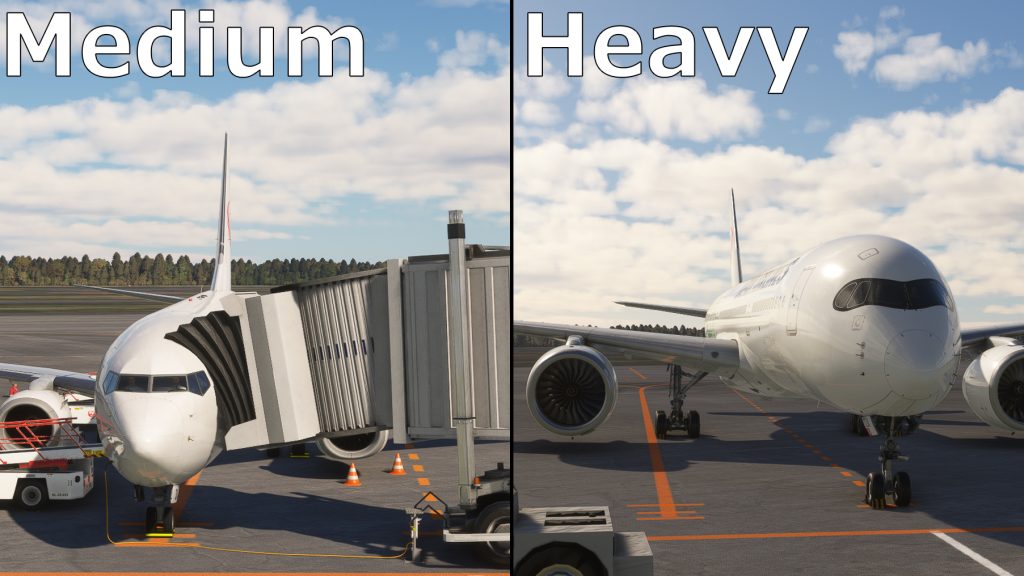
翼幅36m以下の航空機(MEDIUM)は、
実線上に駐機します。
それ以上(767以上含む)の航空機は、
破線上に駐機します。
Aircraft with wingspan of or less than 36 meters, or colloquially, medium (and light) aircraft) should park on the solid line.
All others (aircraft including and bigger than 767) should park on the dashed line.
SPOT 15
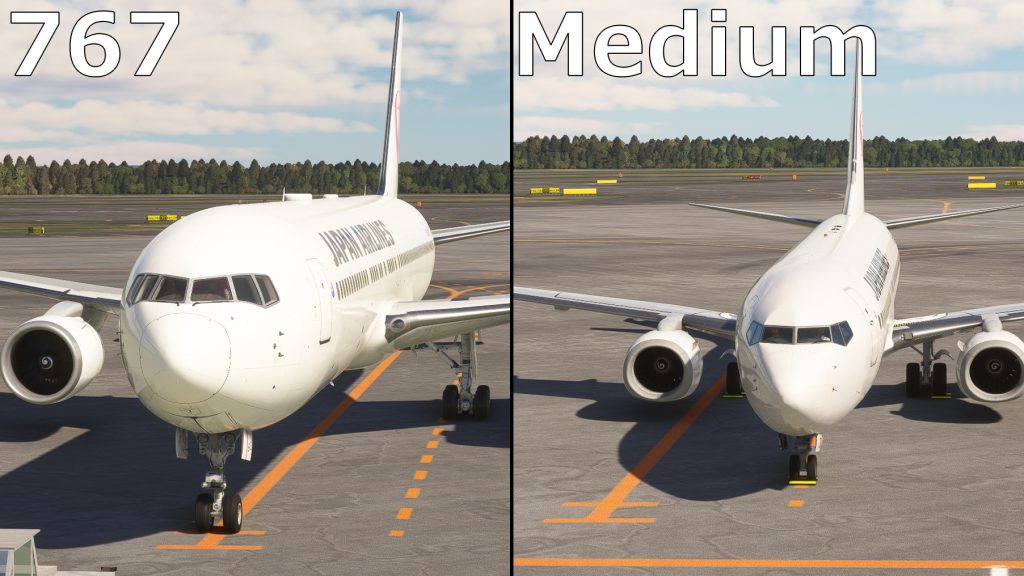
767は、実線上に駐機します。
MEDIUM機(737・320・ERJなど)は、
破線上に駐機します。
767 should park on the solid line.
Medium aircraft (737/320/ERJ) should park on the dashed line.
767以上の航空機は、
SPOT 15には駐機できません。
Aircraft larger than 767 do not park in SPOT 15.
SPOT 20
SPOT 20は使用頻度が低いため、
記載内容が正確でない可能性があります。
Due to the infrequent use of SPOT 20, the information provided may be inaccurate.
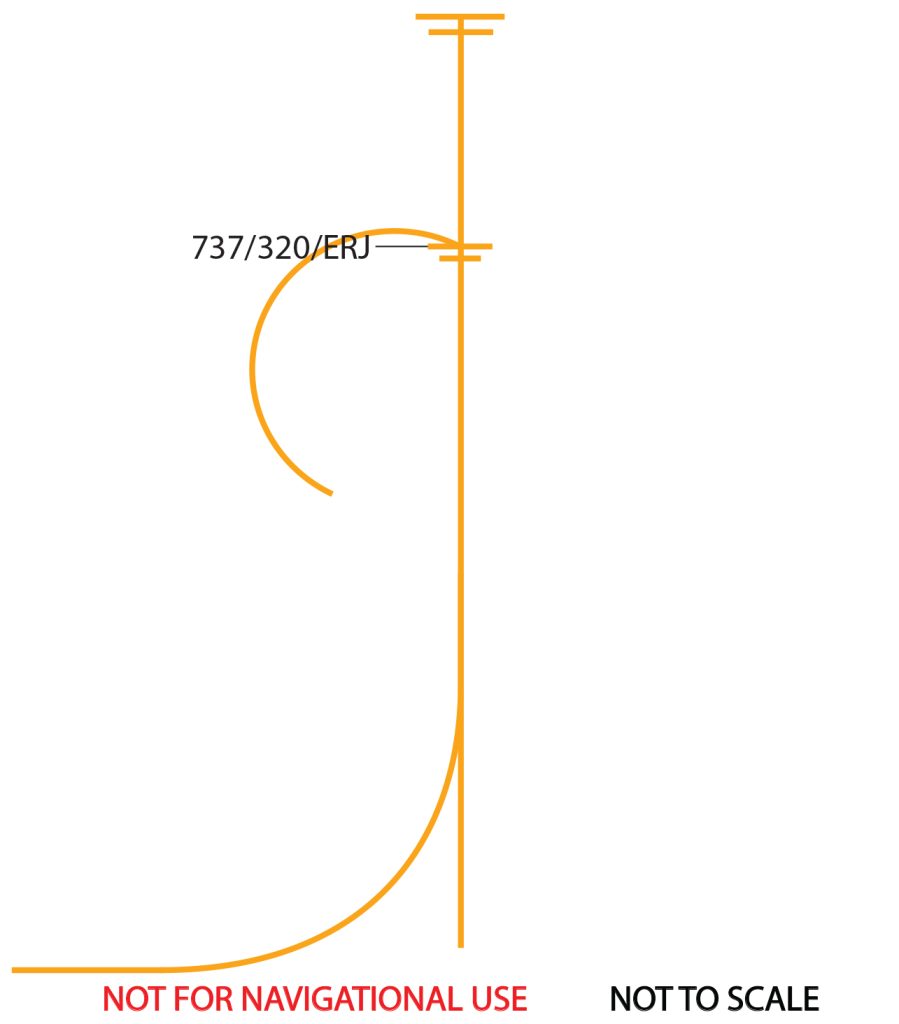
ARC-C以下、B737、A320、ERJなどは、
自走出発を可能にするため、
「T」マークの約16m手前で駐機します。
SPOT 20は、ICAO airport reference code D以上の航空機には使用できません。
Aircraft below and within ICAO ARC Code C (e.g. 737/320/ERJ) should stop about 16m away from the “T” marking to allow power out.
SPOT 20 is not available for aircraft with ICAO Airport Reference Code D and higher.
SPOT 21
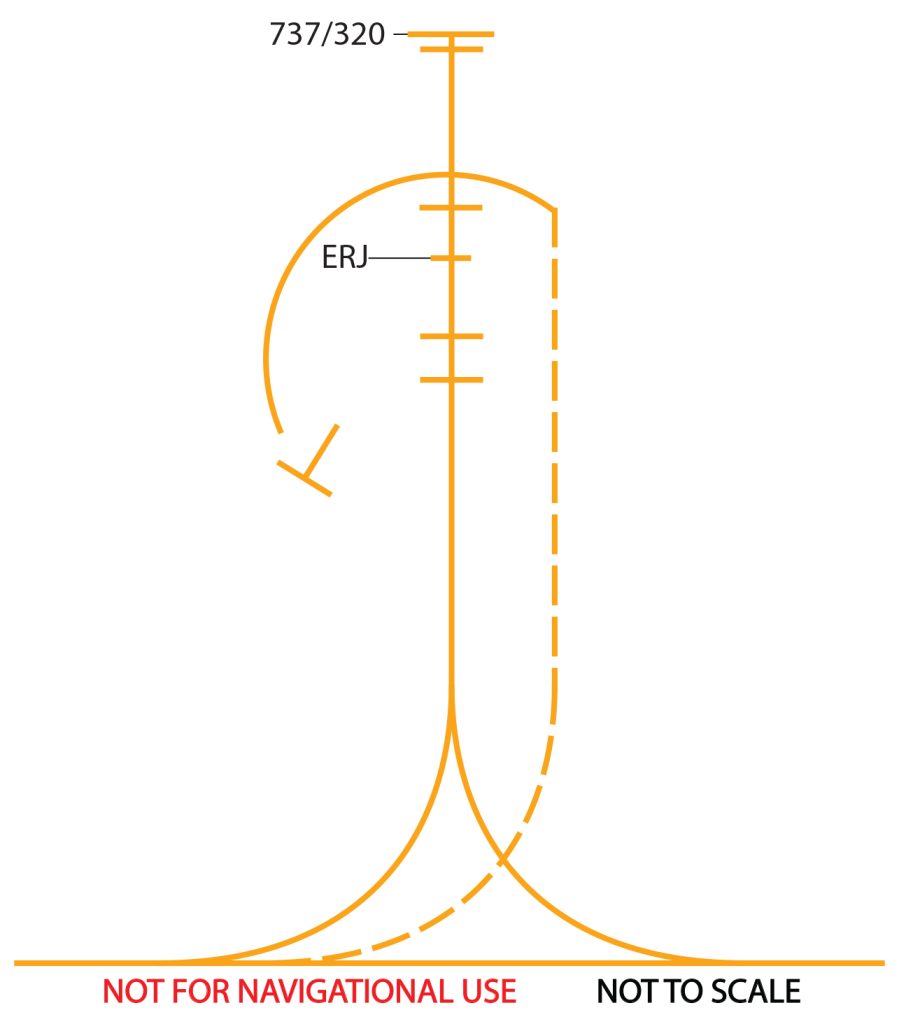
ERJは、自走出発を可能にするため、
「T」マークの約16m手前で駐機します。
ERJ should stop about 16m away from the “T” marking to allow power out.
SPOT 22~24

ERJは、自走出発を可能にするため、
「T」マークの約15~16m手前で駐機します。
ERJ should stop about 15-16m away from the “T” marking to allow power out.
SPOT 55~62

SPOT55〜62に駐機する航空機は、
図示された指定停止位置に駐機します。
なお、ANA Q400は自走出発用停止線よりやや前方に停止します。
Aircraft parking SPOT 55-62 should park at these desginated stop locations, as shown in the figure.
Please note that ANA Q400 parks at a position slightly ahead of the regular stop bar for power out.
「T」マーク前方にある「エ」字停止線は、
ICAO airport reference code D以上の航空機に使用されます。
The “エ”-shaped stop bars, in front of the “T” marking, are used for aircraft with ICAO Airport Reference Code D and higher.
A380-800 and B747-8
A380-800 及び B747-8 が駐機可能なスポットは、NR27、NR47、NR48、NR49、NR57 及び NR58 である。
RJCC AD 2.20.1.4.3)
Available parking stands for A380-800 and B747-8 are NR27, NR47, NR48, NR49, NR57 and NR58.

プッシュバック Pushback
Face North/Southのみ?!
新千歳空港では、プッシュバック後に機首が東・西向きで停止することがありますが、
ATCは、Face NorthかFace Southのどちらかしか指示しません。
At New Chitose Airport, the ATC will only clear you to “Face North” or “Face South,” despite your heading after pushback may be facing east/west (e.g. SPOT 0).
以下の図の通り、F-TWY/J-TWY/K-TWY/T1/T4/M3のみにプッシュバックされるものとします。
Aircraft shall be pushed onto F-TWY/J-TWY/K-TWY/T1/T4/M3 ONLY, as shown in the figures below.


ATCは離陸滑走路の指示を行いません。
ATC will not provide takeoff runway assignment in the pushback clearance.

Chitose Ground, APJ102, Request pushback. SPOT 0, with B.
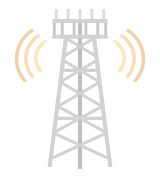
APJ102, Pushback approved, face south.
Power Off Pushback
Power Off Pushback(降雪時や路面凍結時、その他の状況による)行う場合は、
ATCに明確なリクエストを行う必要があります。
If there is a need to perform a power off pushback (due to icing condition/other situations), an explicit request to the ATC is required.
エンジン始動はPower Off Pushback完了後に開始されます。
In a power off pushback, the engine startup shall begin after the aircraft has finished pushback.

Chitose Ground, JAL516, Request power off pushback. SPOT 14, with U.

JAL516, Power off pushback approved, face north.
Long Pushback・Clear SPOT
出発機の走行を待たずに到着機がスポットインできるように、
Long pushback (またはClear SPOT)が指示されることがあります。
To allow arrival aircraft to SPOT in without waiting for departing aircraft to taxi-out, a long pushback (or Clear SPOT) may be instructed.
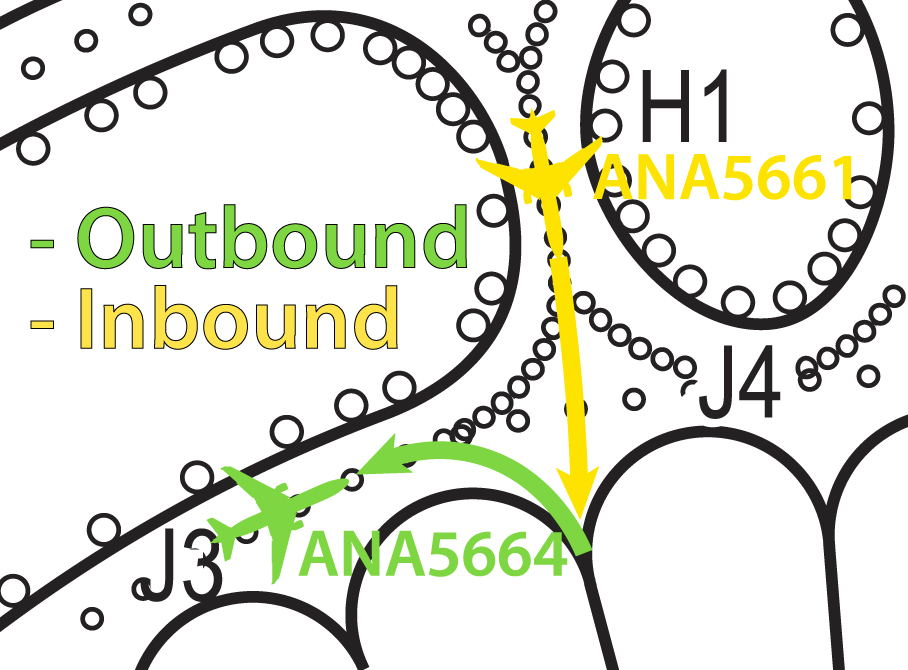

ANA5664, Chitose Ground. Pushback approved, face south. Make long pushback for company traffic to spot in.
Clear behind TWY ○○
ATCが、航空機に特定の誘導路で旋回可能な位置まで移動させたい場合や
誘導路を使用する他の航空機に待機なしでTWYを譲らせたい場合、
「Clear behind (TWY) ○○」と指示することがあります。
When the ATC wants the aircraft to be able to make a turn of a particular taxiway or give way for another traffic using the taxiway without waiting, “Clear behind (TWY) XX” may be instructed.
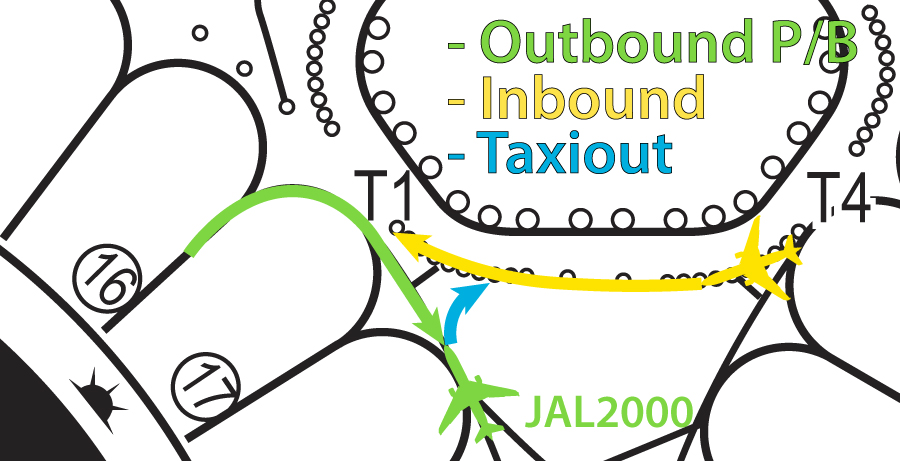

JAL2000, Chitose Ground. Pushback approved, face north, clear behind T4.
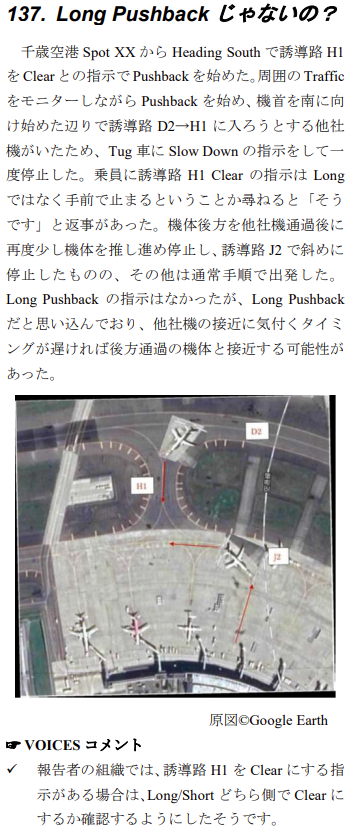
出典: FEEDBACK No. 2021-01 (137)
「Clear TWY ○○」という指示は、
TailをClearすることとも、
NoseをClearすることとも解釈できるため、
誤解を招くおそれがある点にご注意ください。
Please note, a “Clear TWY XX” instruction may be misleading, since it can be interpreted as either “tail clear” or “nose clear” of TWY XX.
指示が曖昧な場合は、
必ずATCに確認してください。
Please double confirm when the instruction is ambiguous.
SPOT 17~18・19について
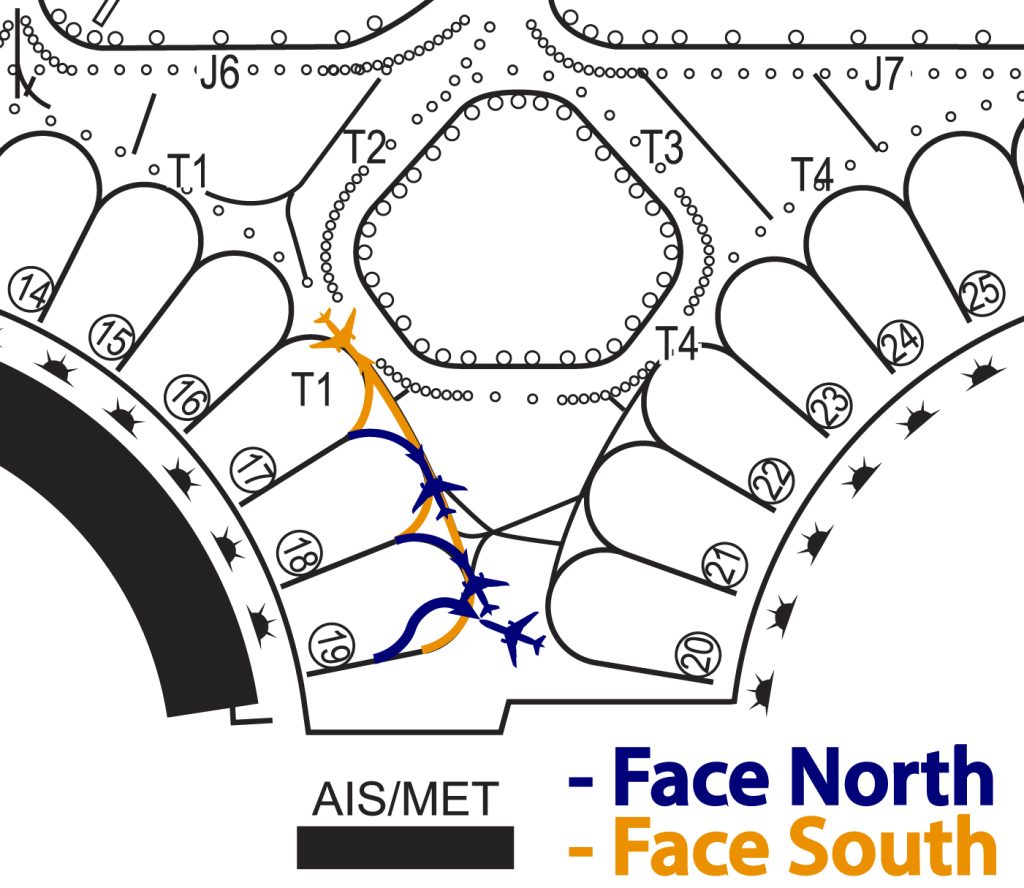
SPOT 17~19の航空機は、できるだけFace Northのプッシュバックとします。
Aircraft in SPOTs 17-19 should perform face north pushbacks when able to.
Face South必要がある場合は、
狭い空間で180度の旋回を行う必要がないように、
航空機が左折してTWY T4に走行できる位置までプッシュバックとします。
If need cleared to face south, the aircraft shall be pushed to the position where the aircraft can make a left to join TWY T4, such that the aircraft will not need to make a 180 degree turn in this alleyway.
Face South許可が出た場合は、確実にするために、
許可に「Clear behind T4」を含めるようにするとよいです。
When cleared to face south, it is best to make sure the pushback clearance to include “Clear behind T4,” for better confirmation.
SPOT 19 からプッシュバックする際は、下図に示す経路に従ってください。
When pushing back from SPOT 19, the aircraft should follow the path shown in the figure below.
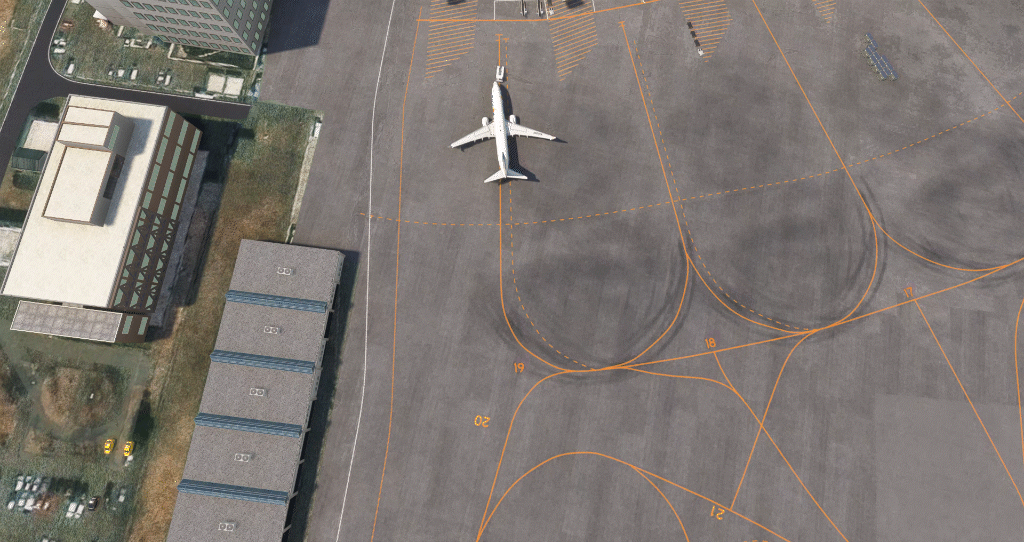
SPOT 20について
SPOT 20はSPOT 19とほぼ同じくらい狭いです。
可能な場合はプッシュバックの代わりに自走出発を行うことができます。
SPOT 20 is almost as tight as SPOT 19.
However, SPOT 20 can power out, instead of pushback, when able to.
もしFace Southのプッシュバックが必要な場合は、経路はSPOT 19と同様の形となります。
If there is a need to perform a face south pushback, the pushback path should be analgous to one for SPOT 19.
SPOT 21~22について
SPOT 21~22からのプッシュバックは、
SPOT 17~18と同様のパターンで行いますが、Face Southが推奨されます。
Pushbacks from SPOTs 21-22 shall follow the same fashion as SPOTs 17-18, except that heading south is preferred.
その他の交信 Other Communication Keypoints
千歳DEL・GNDへのイニシャルコンタクト時には、下記項目を伝達します。
On initial contact with Chitose Delivery/Ground, please state your
- SPOT Number (SPOT番号)
- ATIS Information (ATIS情報)
- EDCT (if provided – EDCTが有効な場合)
自走出発 Power Out (Self Taxi Out)
お読みになる前に、「駐機位置 Stand Stop Location」をご一読ください。
Please be sure to read “駐機位置 Stand Stop Location” before reading this section.
ATC
管制官にエンジンの始動許可を要求する必要はなく
エンジン始動後にスポットで地上走行の許可を要求することになります。
For self taxi-out operations, pilots do not need to request engine startup with the ATC and shall request taxi clearance after engine startup in the spot.
SPOT 0~3
SPOT 0~3に駐機するQ400およびCRJは、エンジン始動および自走出発の前に、
短距離直進プッシュバックを行います。
Q400s and CRJs from SPOT 0-3 makes a straight short pushback before engine startup and power out.
このようなプッシュバックを実行する場合、ATCへの要求は不要です。
プッシュバックとエンジン始動が完了した後、地上走行を要求します。
Pilots do not need to request “pushback” with the ATC and shall request taxi after pushback and engine startup is completed.
短距離直進プッシュバックしたのち、右に転回して黄線に沿って自走出発します。
The aircraft shall be pushed straight for a small distance, and the aircraft shall turn right and follow the yellow solid line to taxi out.
航空機は「T」マークから最も遠い停止線までプッシュバックするものとします。
SPOT 0~2ではプッシュバック距離は約12m、SPOT 3では約30mとなります。
Aircraft shall be pushed to the stop bar furthest from the “T” marking.
For SPOT 0-2, the pushed distance is around 12m; for SPOT 3, the distance is around 30m.
短距離プッシュバック後、機尾はエプロン内かつ破線より前方に位置している必要があります。
After the short pushback, the aircraft tail must stay within the apron.
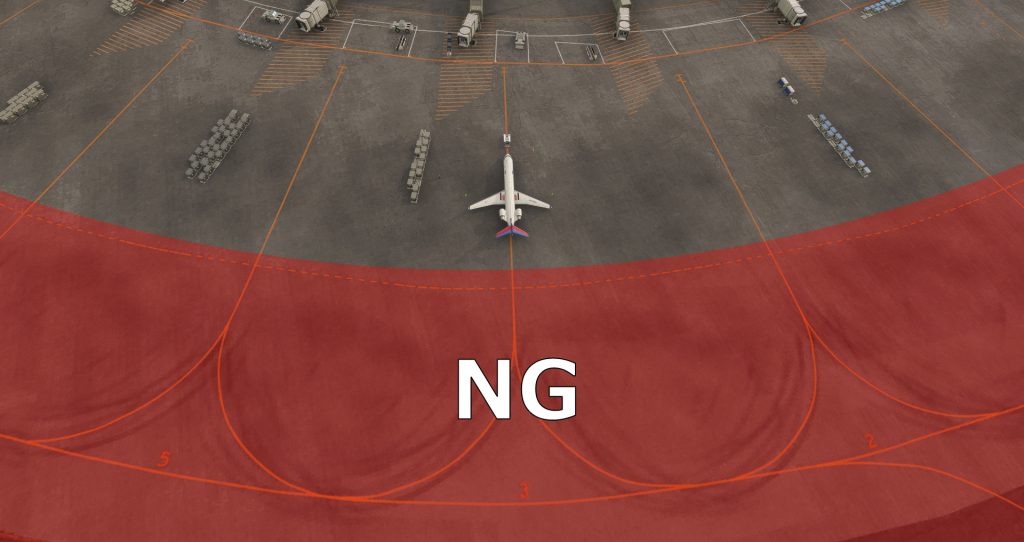
SPOT 20~26
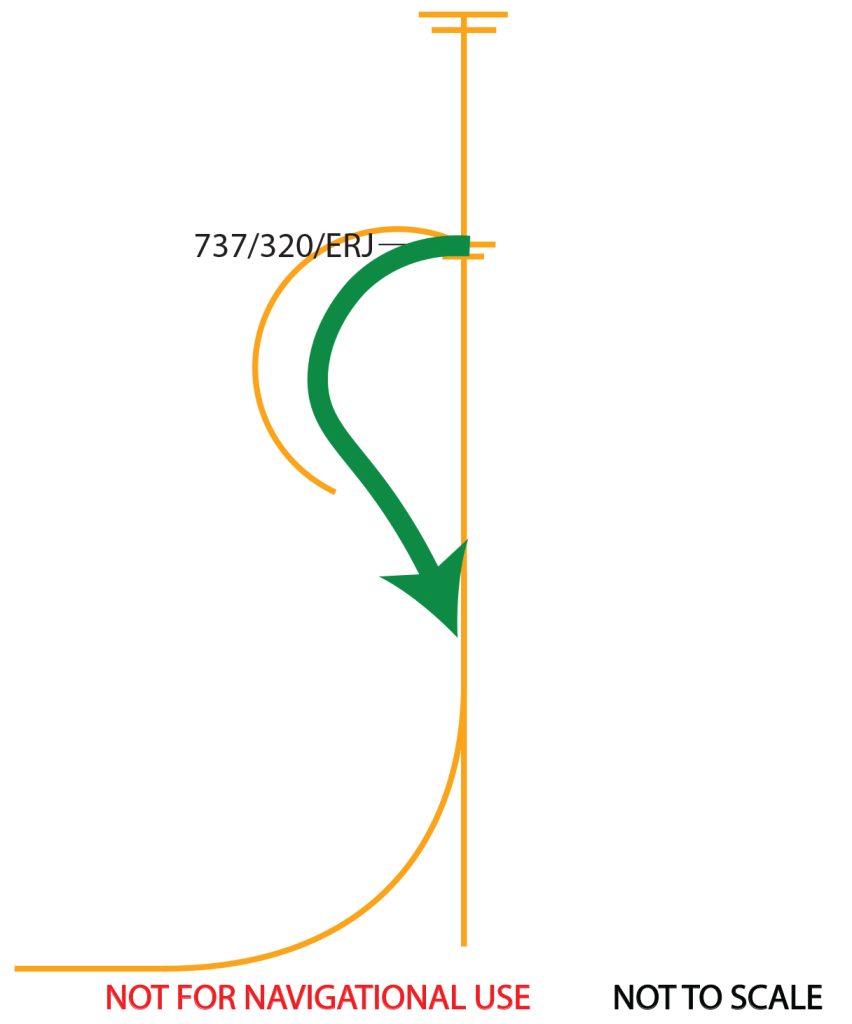
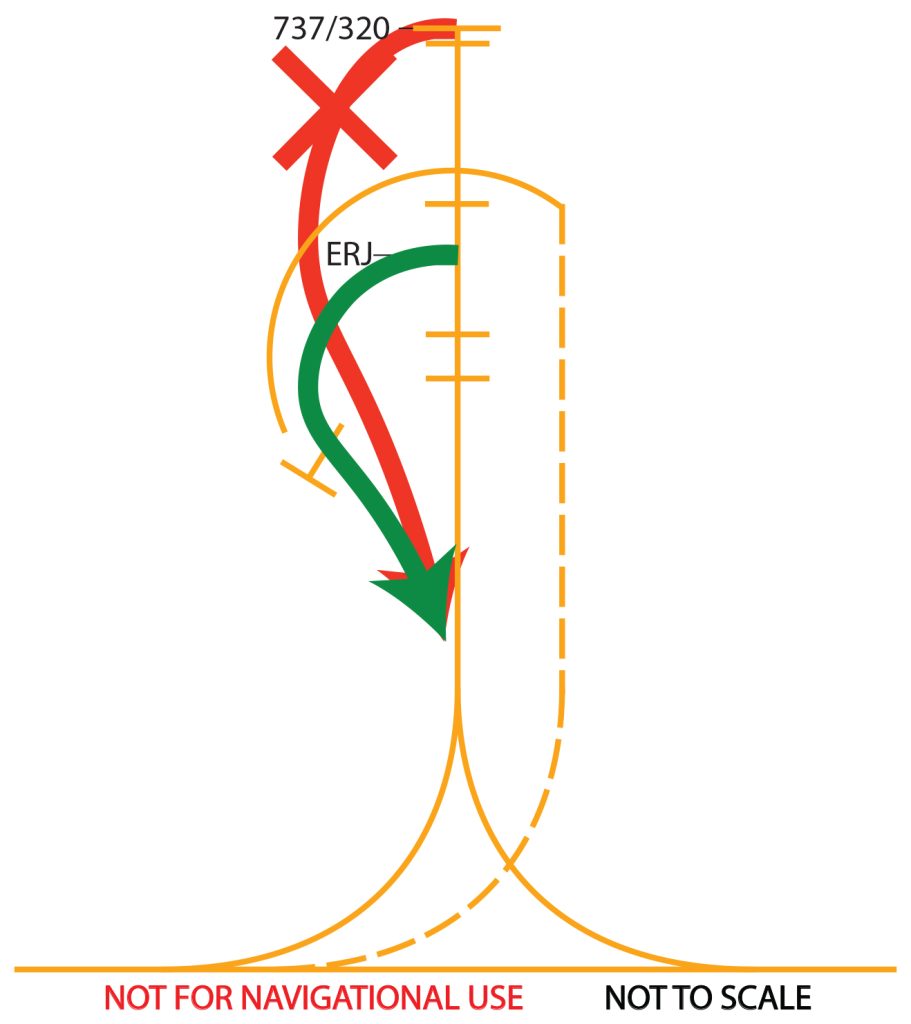
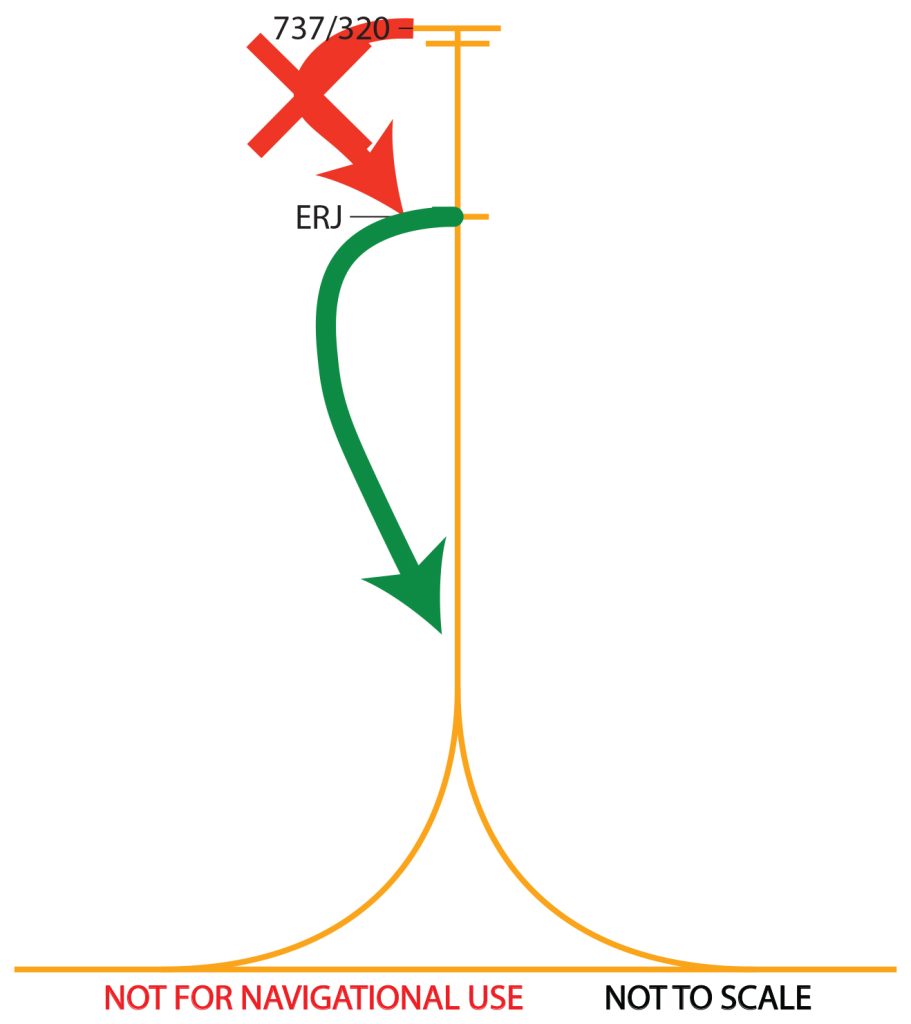
SPOT 21~26に駐機するERJとSPOT 20に駐機するのMEDIUM機は、
左旋回で自走出発を行います。
ERJs from SPOT 21-26 and all mediums from SPOT 20 ONLY should make a clockwise turn for a power out.
「T」マークに駐機している航空機は、GSE置場に侵入するため、
自走出発を実施してはなりません。
Aircraft parking at the “T” marking should not make a power out, as doing so will infringe equipment parking area (EPA).
SPOT 55~62
他の航空機又は障害物とのクリアランスの確保、及びジェットブラストによる影響の回避のため、スポット 55 から 62 における自走アウトは、次の方式に従うこと。ただし、別途空港管理者の承認を受けた場合を除く。
a) 自走アウトは、 旋回半径が 26 m 以下であり、かつ、導入線直線部からの水平距離が 34 m の区域内での旋回が可能な航空機に限ること。
b) スポットにおける地上移動は、ブラストの影響が出ないことを確認の上行うこと。
c) 自走アウトの旋回は、旋回線の起点までに開始すること。
d) 旋回完了後は導入線に会合し、導入線を導出線として利用すること。In order to keep the clearance with other aircraft or obstacles and avoid jet blast damage, operators shall comply with the following power-out procedure on spot NR55 through NR62.
Although the case that approved by AD administration is excluded.a) Only the aircraft whose turning radius is within 26 meters and which is available to turn within the area whose horizontal distance from the straight part of the lead-in line is 34 meters is permitted to use this power-out procedure.
RJCC AD 2.20.2
b) Operators must confirm jet blast cause no damage when maneuvering on aircraft stands.
c) Commence turning of the power-out procedure at or before the starting point of the turning line.
d) After completing the turn, intercept the lead-in line and use the line as the lead-out line.
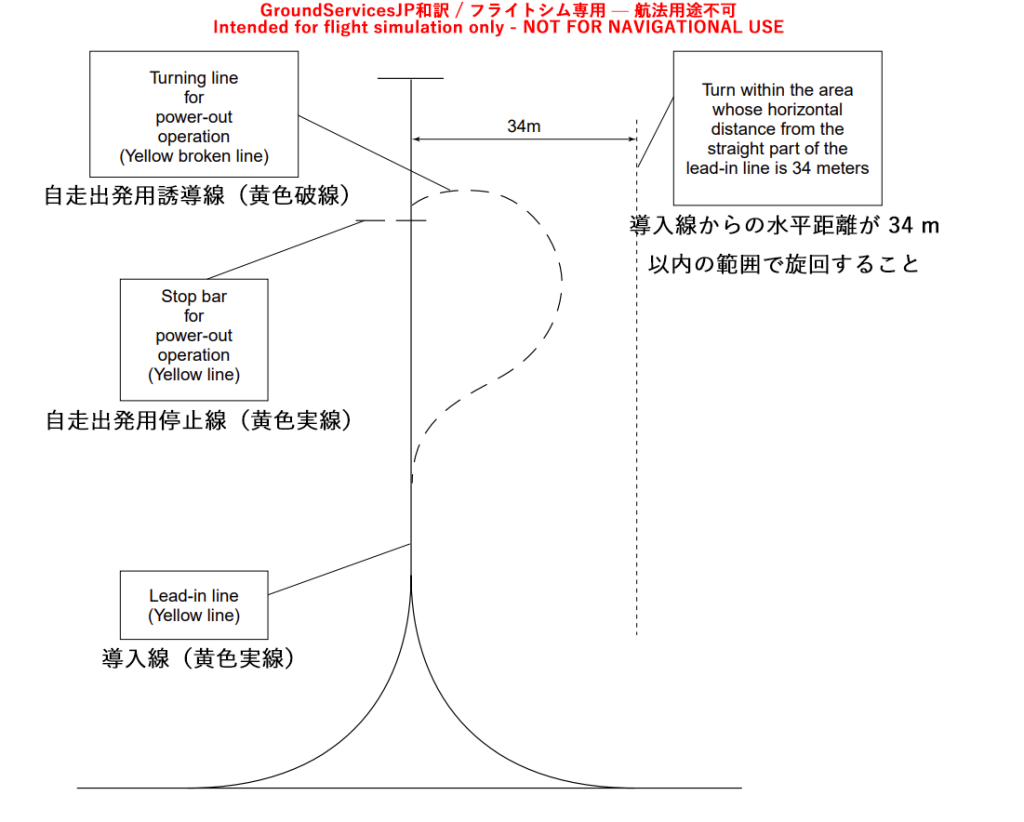
停止線より前に駐機していますが、ANA Q400も自走出発が可能です。
Although parked ahead of stop bar for power-out operation, ANA Q400 could also make a power out.
737-800やA320/1のような旋回半径が26m以下の航空機でも、自走出発は行いません。
Although some aircraft, like Boeing 737-800 and A320/1, has a turning radius smaller than 26m, these aircraft do not perform power out.
まとめ Overview
各スポットの転回方向は、以下にまとめられています。
The directions of turning for each SPOT are tabulated below.
| SPOT | 転回方向 Turning Direction | 対象機種 Target Aircraft |
|---|---|---|
| 0~3 | 右(短距離プッシュバックとエンジン始動後に) Clockwise (after short pushback and startup) | Q400・CRJ |
| 20 | 左 Counter-Clockwise | Medium (if not at T marking) |
| 21 | 左 Counter-Clockwise | ERJ (170/175/190)・ATR |
| 22~24 | 左 Counter-Clockwise | ERJ (170/175/190)・ATR |
| 55~62 | 右 Clockwise | Q400・CRJ・ERJ・Prop |
グランドハンドリング/ケータリング業者 Ground Handling/Catering Operators
グラハン業者は、GSXで用意されているオペレーターに基づいて設定されているため
実際にGHを行っている業者とは異なる場合があります。
The ramp handling operators shown below are based on the GSX operator list; they may not reflect the actual ramp handling company.
国内旅客線 Domestic Passenger
| 航空会社 Airline | グラハン Ground Handling | 機内食 Catering | 備考 Notes |
|---|---|---|---|
| JAL・J-AIR | JAL | ニュー王子 New Oji | なし |
| ANA・AKX | ANA | ニュー王子 New Oji | なし |
| ADO | ANA | ニュー王子 New Oji | なし |
| SKY | SKY | ニュー王子 New Oji | なし |
| FDA | SAS∗ (SAS JP) | ニュー王子 New Oji | なし |
| APJ | ANA | ニュー王子 New Oji | なし |
| JJP | JAL | ニュー王子 New Oji | なし |
| IBEX | ANA | なし | |
| SJO (旅客) | JAL | ニュー王子 New Oji | なし |
∗SASとは日本のGH会社であり、Scandinavian Airlines (System)を混同しないでください。
∗Do not confuse SAS with Scandinavian Airlines (System). SAS is also the name of a Japanese ground handling company.
国際旅客線 International Passenger
| 航空会社 Airline | グラハン Ground Handling | 機内食 Catering | 備考 Notes |
|---|---|---|---|
| APJ/MM | ANA | ニュー王子 New Oji | 国際線運休 Intl Flights Suspended |
| KAL/KE | KAAS | ニュー王子 New Oji | |
| SHU/HZ | 運航休止 Suspended | ||
| CES/MU | JAL | ニュー王子 New Oji | |
| CPA/CX | JAL | ニュー王子 New Oji | |
| EVA/BR | ANA | ニュー王子 New Oji | |
| CAL/CI | JAL | ニュー王子 New Oji | |
| CCA/CA | ANA | ニュー王子 New Oji | |
| TAX/XJ | HKK (CAST)※ | ニュー王子 New Oji | |
| JNA/LJ | HKK (CAST)※ | ニュー王子 New Oji | |
| THA/TG | HKK (CAST)※ | ニュー王子 New Oji | |
| TWB/TW | HKK (CAST)※ | ニュー王子 New Oji | |
| CRK/HX | ANA | ニュー王子 New Oji | |
| CQH/9C | JAL | ニュー王子 New Oji | |
| XAX/D7 | HKK (CAST)※ | ニュー王子 New Oji | 季節運航 Seasonal |
| GCR/GS | FRS (FMG Ramp Solutions) | ニュー王子 New Oji | |
| ABL/BX | HKK (CAST)※ | ニュー王子 New Oji | |
| JJA/7C | HKK (CAST)※ | ニュー王子 New Oji | |
| AAR/OZ | ANA | ニュー王子 New Oji | |
| TGW/TR | HKK (CAST)※ | ニュー王子 New Oji | |
| CHH/HU | FRS (FMG Ramp Solutions) | ニュー王子 New Oji | |
| DKH/HO | SAS∗ (SAS JP) | ニュー王子 New Oji | |
| ESR/ZE | SAS∗ (SAS JP) | ニュー王子 New Oji | |
| MXD/OD | JAL | ニュー王子 New Oji | |
| CSN/CZ | JAL | ニュー王子 New Oji | |
| CSZ/ZH | ANA | ニュー王子 New Oji | |
| CDG/SC | 運航休止 Suspended | ||
| CXA/MF | 運航休止 Suspended | ||
| TTW/IT | JAL | ニュー王子 New Oji | |
| SJX/JX | JAL | ニュー王子 New Oji | |
| EOK/RF | FRS (FMG Ramp Solutions) | ニュー王子 New Oji | |
| VJC/VJ | FRS (FMG Ramp Solutions) | ニュー王子 New Oji | |
| CBJ/JD | FRS (FMG Ramp Solutions) | ニュー王子 New Oji | 運航休止 Suspended |
| CEB/5J | FRS (FMG Ramp Solutions) | ニュー王子 New Oji | |
| AIQ/FD | HKK (CAST)※ | ニュー王子 New Oji | |
| SIA/SQ | ニュー王子 New Oji | 季節運航 Seasonal | |
| PAL/PR | JAL | ニュー王子 New Oji | |
| TLM/SL | ニュー王子 New Oji | ||
| QFA/QF | 再開予定 Scheduled | ||
| HGB/HB | 就航予定 Scheduled | ||
| OKA/BK | 運航休止 Suspended | ||
| HGB/HB | FRS (FMG Ramp Solutions) | ニュー王子 New Oji | チャーター Charter |
| UAL/UA | JAL | ニュー王子 New Oji | 運航休止 Suspended |
※北海道空港株式会社(HKK)は、2024年4月1日をもちましてキャスト(CAST)と合併いたしました。
∗SASとは日本のGH会社であり、Scandinavian Airlines (System)を混同しないでください。
∗Do not confuse SAS with Scandinavian Airlines (System). SAS is also the name of a Japanese ground handling company.
国内貨物便 Domestic Cargo
| 航空会社 Airline | グラハン Ground Handling |
|---|---|
| SJO (ヤマト運輸) | JAL |
スポット情報 Spot Information
情報は最新でない、もしくは完全でない可能性があります。
Information may be incomplete or not up to date.
国内旅客線 Domestic Passenger
| 航空会社 Airline | ゲートスポット Gate SPOT | オープンスポット Remote SPOT |
|---|---|---|
| JAL・J-AIR | 10~19 | 20~27 |
| ANA・AKX | 0~11 | 55~62 |
| ADO | 0~11 | 55~62 |
| SKY | 17~19 | 20~27 |
| FDA | 17~19 | 20~27 |
| APJ | 0~5 | 55~62 |
| JJP | 15、17~19 | 20~27 |
| IBEX | 1、2 | 55~62 |
| SJO (旅客) | 15、17~19 | 20~27 |
国際旅客線 International Passenger
63番~71番ゲートスポットおよび55番~62番オープンスポットは、国際線で使用されています。
SPOTs for international operations are 63-71 (gates) and 55-62 (remote stands).
国内貨物便 Domestic Cargo
90番~91番スポットは、SJO(ヤマト運輸)で使用されています。
Yamato Transport (operated by Spring Japan) uses SPOT 90-91.
GSX Pro Profile
For KAPIさん+karuchieさん’s RJCC
Summary
プロファイル名 Profile Name: rjcc-kapi_karuchie.ini/.py
シーナリー作者 Scenery Creator: KAPIさん + karuchieさん
プロファイルバージョン Profile Version: 1.0
対応シーナリーバージョン Supported Scenery Version: 2.3.5+(KAPI), 0.1.1+ (Karuchie)
最終更新日 Last Updated: Aug. 10th, 2025
シーナリーDL + インストール方法 Scenery Download and Installation
- 既存のRJCCシーナリーをすべて削除します。
- KAPIさんのシーナリーをDLして解凍します: https://jp.flightsim.to/file/25235/rjcc-new-chitose-version。
- KaruchieさんのシーナリーをDLして解凍します: https://jp.flightsim.to/file/94732/rjcc-new-chitose-airport-addition。
Communityフォルダにkapi-rjccフォルダを配置します。airport-rjcc-z-new-chitose-additionフォルダをz-airport-rjcc-z-new-chitose-additionフォルダにリネームします。airport-rjcj-chitosez-airport-rjcj-chitoseフォルダにリネームします。Communityフォルダにz-airport-rjcc-z-new-chitose-additionz-airport-rjcj-chitoseフォルダを配置します。- リネーム後、
z-airport-rjcc-z-new-chitose-additionz-airport-rjcj-chitoseは、名前順でソートした際にkapi-rjcc
- リネーム後、
- Remove all existing RJCC sceneries.
- Download Mr. KAPI’s scenery and unzip: https://flightsim.to/file/25235/rjcc-new-chitose-version.
- Download Mr. Karuchie’s scenery and unzip: https://flightsim.to/file/94732/rjcc-new-chitose-airport-addition.
- Place
kapi-rjccCommunityfolder. - Rename
airport-rjcc-z-new-chitose-additionz-airport-rjcc-z-new-chitose-addition. - Rename
airport-rjcj-chitosez-airport-rjcj-chitose - Place
z-airport-rjcc-z-new-chitose-additionz-airport-rjcj-chitoseCommunityfolder, such thatz-airport-rjcc-z-new-chitose-additionz-airport-rjcj-chitosekapi-rjcc
特徴 Features
- 0~19番および63~71番スポットにVDGSが設置されています。
VDGS installed at Spots NR0-NR19 and NR63-NR71. - 機体を判別して駐機位置が変わるように設定されています。
Custom parking STOP location. - ATCでの実際の表現に基づいた多様なプッシュバックが設定されています。
Realistic and Various pushback procedures with ATC phraseology. - すべてのスポットで、設定可能な正しいグランドハンドリング業者を配置しています。
Correct ground handling operators at every spot. - カスタムエンジン始動通話/翼端監視員を設定されています。
Custom Engine Start Calls/Wing Walkers.
ご注意! Notices to Users
SPOT 44~62について
RJCJとシーナリー競合しているため、
SPOT 44〜62ではGSX Proのグランドハンドリングをご利用いただけません。
Due to scenery conflict with RJCJ, GSX Pro services are not available at SPOTs 44-62.
スポットインを支援するマーシャリングは引き続き利用可能です。
プッシュバックについては、他のツール(Toolbar Pushbackなど)をご利用いただけます。
However, marshalling service to assist spot in is still operable. Pushbacking with other tools (e.g. Toolbar Pushback) is still possible.
PBBについて About Jetways
GSX Proは、PBBのアニメーションや航空機への接続といった動作を制御しません。
動作はMSFSによって管理されています。
GSX Pro does not control jetway behaviors like animation/connection to the aircraft.
These behaviors are controlled by MSFS’s internal logic.
GSJPのプロファイルでは、PBBのスムーズな接続を可能にするため、
航空機を最適な位置に設置しておりますが、
MSFSの設計やPBBの設置位置など、様々な理由により、接続できないケースがあります。
Although GSJP GSX Pro profile has moved the aircraft to the best possible position for smooth jetway connection, there may be occurences where the jetway fails to connect due to various reasons from MSFS design and scenery creations.
特に、SPOT 0〜6および63〜71において、稀にPBB接続の問題があります。
We observe rare jetway connection issues at SPOTs 0-6 and 63-71.
国際線ターミナルビル上の標識 Signs on the International Terminal Bldg.
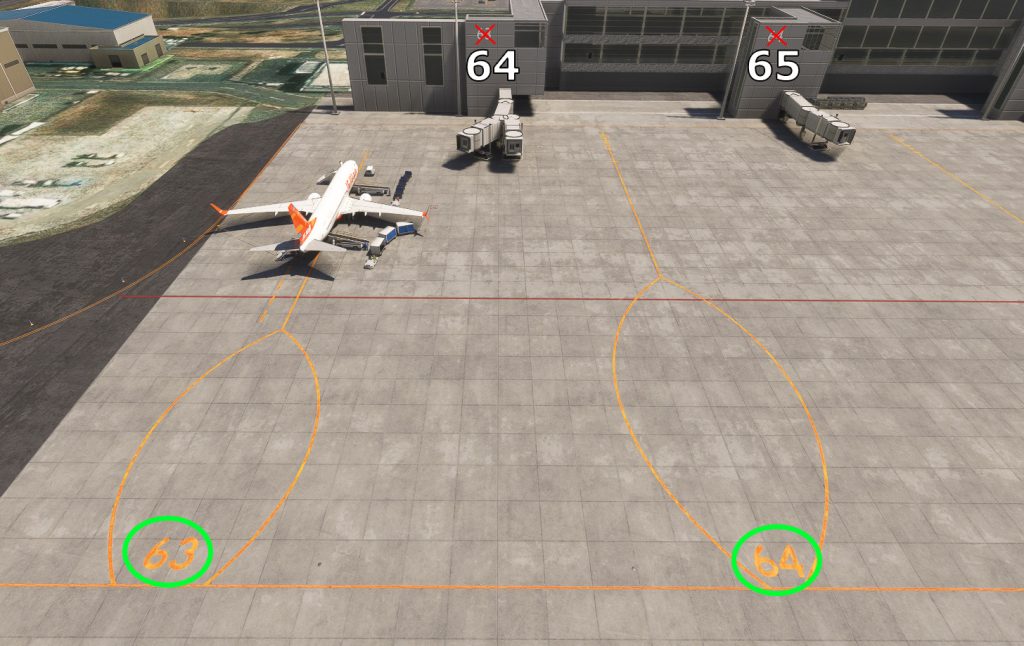
KAPIさんのシーナリーに国際線ビルのスポット表示は誤っております。
地上標示をご利用ください。
The SPOT signs on the international terminal building is incorrect in Mr. KAPI’s scenery. Please use the ground marking as the correct reference.
プロファイル Profile Download
Contributors
- ろくまる
- ANA7875
- ろぼたん
